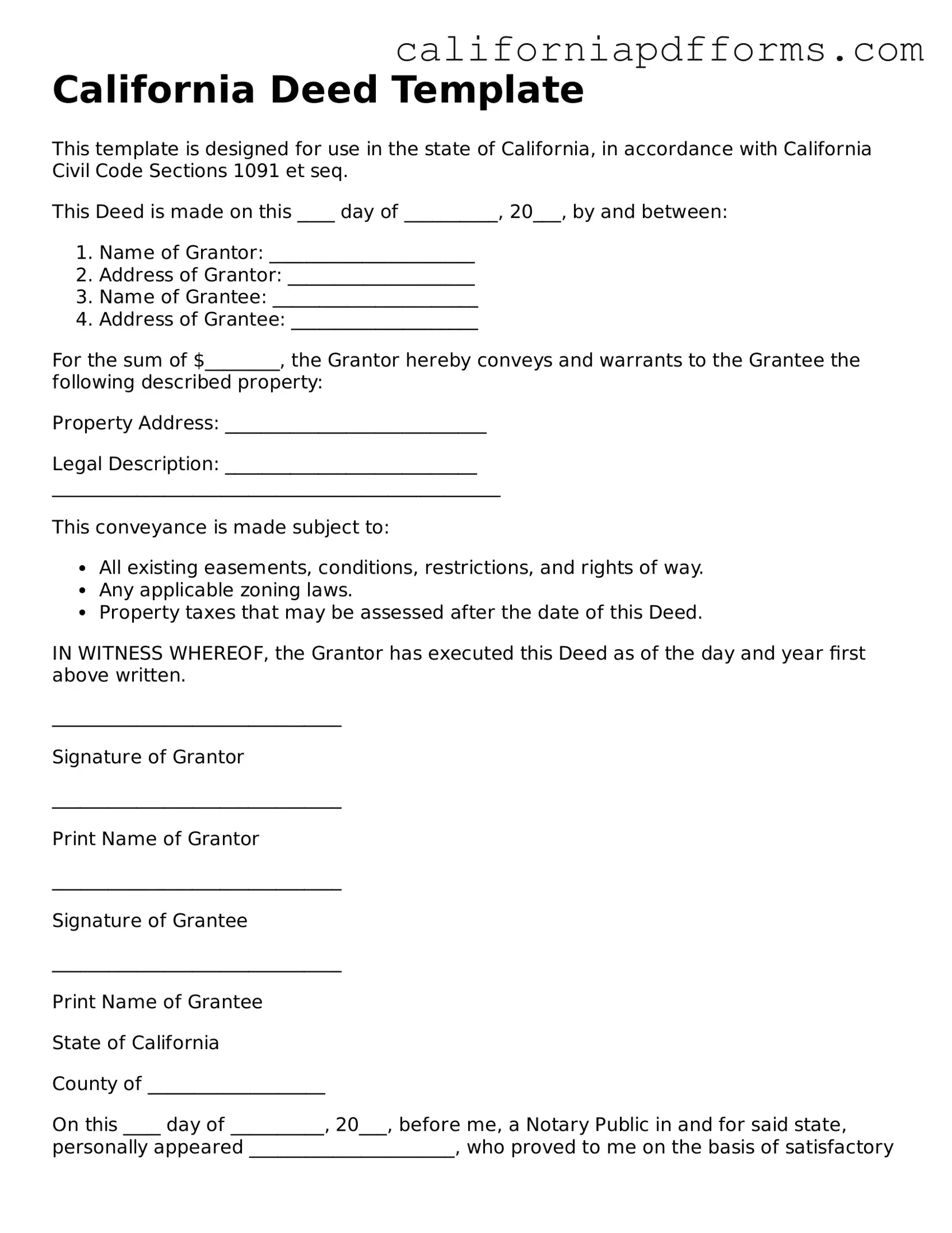A California Deed form is a legal document used to transfer ownership of real property in California. It serves as proof of the transfer and outlines the details of the transaction, including the parties involved and the property description.
What types of Deeds are available in California?
California recognizes several types of Deeds, including:
-
Grant Deed:
This is the most common type, which guarantees that the seller has not sold the property to anyone else.
-
Quitclaim Deed:
This transfers whatever interest the seller has in the property without any guarantees.
-
Warranty Deed:
This provides the highest level of protection for the buyer, ensuring that the seller has clear title to the property.
-
Trustee's Deed:
Used in the context of a foreclosure or when a property is held in a trust.
Do I need to have the Deed notarized?
Yes, in California, a Deed must be notarized to be legally valid. This process ensures that the identities of the parties involved are verified, and it helps prevent fraud.
To complete a California Deed form, follow these steps:
-
Identify the type of Deed you need.
-
Fill in the names of the grantor (seller) and grantee (buyer).
-
Provide a legal description of the property.
-
Include the date of the transaction.
-
Sign the Deed in front of a notary public.
Where do I file the Deed after completion?
After completing and notarizing the Deed, it must be filed with the county recorder's office in the county where the property is located. This step is crucial for making the transfer of ownership public and official.
Are there any fees associated with filing a Deed?
Yes, there are typically fees associated with filing a Deed. These fees vary by county and may include recording fees, transfer taxes, and additional charges. It’s advisable to check with your local county recorder's office for specific fee amounts.
Can I transfer property to myself using a Deed?
Yes, you can transfer property to yourself using a Deed. This is often done for estate planning purposes or to change the way the property is held. However, it’s important to consider potential tax implications and consult with a professional if needed.
What happens if I make a mistake on the Deed?
If a mistake is made on the Deed, it may lead to complications in the property transfer. Depending on the error, you might need to create a new Deed or execute a correction deed to amend the mistake. Consulting with a legal professional is recommended to address any issues properly.
